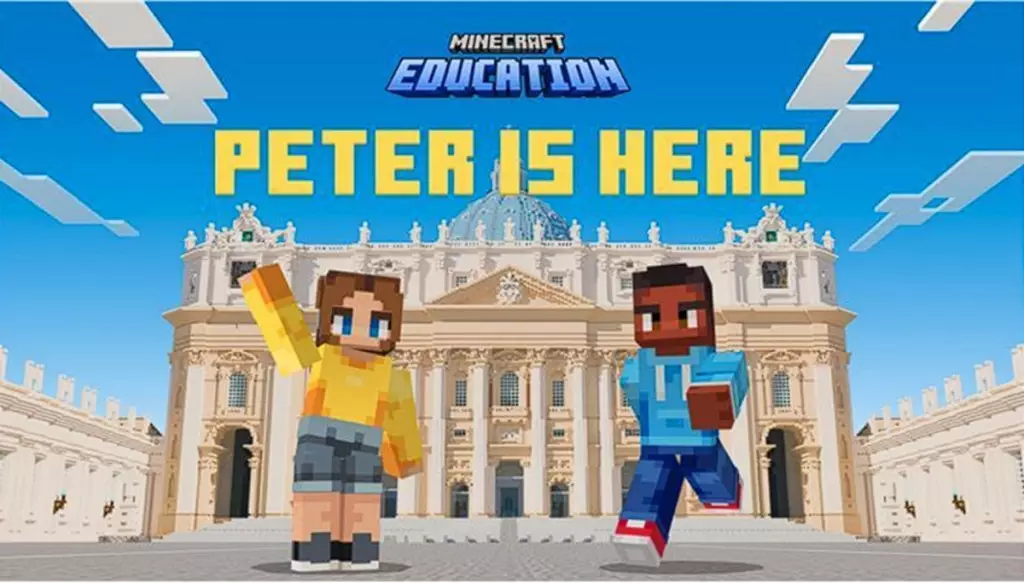St. Peter’s Basilica, a marvel of art and architecture, has long been a symbol of religious and historical significance. A new venture has emerged that seeks to bridge the ancient and the modern, allowing students to engage with this iconic landmark through a fresh lens. The project, “Peter Is Here,” by Microsoft and the Vatican, marries the timelessness of cultural heritage with the innovative possibilities afforded by artificial intelligence (AI) and the popular gaming platform, Minecraft. This initiative invites students not just to observe history but to participate in its preservation, thereby transforming them from passive learners into hands-on conservators.
The Concept of Digital Restoration
“Peter Is Here” embodies the quintessence of experiential learning. At its core, it utilizes advanced technology to create a digital twin of St. Peter’s Basilica. By employing photogrammetry—a process that uses photographs to create precise 3D models—this project showcases the potential of AI to aid in the conservation of historical sites. Students step into the shoes of the *Sanpietrini*, the real-life custodians of the Basilica, engaging in restoration tasks that reflect the challenges and intricacies involved in cultural preservation.
By combining education with gameplay, students are inspired to take on responsibilities traditionally reserved for professionals. The game gives them access to AI tools that replicate real-world applications, thereby equipping them with knowledge that is valuable in today’s digital age. This experience is not only about restoring a virtual landmark but also understanding the vital role of technology in maintaining our shared heritage.
Engaging Gameplay Mechanics
The gameplay is divided into two major modes: Restoration Mode and Exploration Mode. In Restoration Mode, students face a series of interactive challenges set against different historical backdrops. They are tasked with repairing iconic elements of the Basilica while gaining insight into various architectural styles and methods from ancient Rome to the Renaissance.
Employing simulated AI tools, participants must make critical decisions that have immediate consequences on the Basilica’s condition. As they restore historical artifacts, the learning path becomes a dynamic interplay of theoretical knowledge and practical application. This engagement encourages critical thinking, problem-solving, and real-time decision-making—skills that transcend the virtual environment.
Furthermore, the Restoration Mode’s unique chronological structure enhances the educational aspect. By focusing on different historical eras—such as the construction of the Vatican Obelisk in 75 AD to Bernini’s Baldachin in 1626—students gain a multi-faceted understanding of the Basilica’s evolution. Each restoration task serves as both a lesson in history and a commitment to cultural stewardship.
Seamless Transition to Exploration
Upon completing their restoration projects, students transition into Exploration Mode. Here, they dive deeper, engaging as historians navigating the grand halls of the restored Basilica. Utilizing tools like the Smart Compass, they explore hidden corners and interact with characters like Michelangelo, gaining contextual knowledge that animates history in an unprecedented manner.
The exploration phase brings a sense of adventure, as students uncover artifacts and stories that enrich their understanding of the Basilica’s significance. These interactive encounters foster a deeper emotional connection to the past, reinforcing the idea that history is not merely a series of dates and events but a living narrative that continues to evolve.
Educational Resources for Teachers
The collaboration between Microsoft and the Vatican doesn’t stop at gameplay. Recognizing the educational potential of this program, they provide educators with a wealth of resources including PowerPoint presentations and workbooks. This ensures that teachers can seamlessly integrate the lessons learned in “Peter Is Here” into their curriculum, fostering cross-disciplinary connections among history, art, technology, and STEM.
Educators are not left to navigate this innovative terrain on their own; they are equipped with structured materials that align with academic objectives. This comprehensive approach maximizes engagement and learning outcomes, making it easier to impress upon students the importance of cultural preservation in a modern context.
Empowering Future Generations
As students embark on this unique journey of restoration and exploration, they not only acquire valuable skills and knowledge but also fulfill the role of active stewards of cultural heritage. At the culmination of their experience, participants receive a certificate recognizing their achievements, empowering them to acknowledge their newfound abilities as budding conservators.
In an era where the threats to our cultural landmarks are increasingly urgent, initiatives like “Peter Is Here” stand as a testament to the potential of innovative technologies to inspire and educate. By nurturing a sense of responsibility and appreciation for cultural heritage among young learners, this project ensures that future generations will carry forward the legacy of preservation, one virtual block at a time.


Leave a Reply